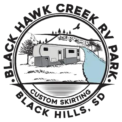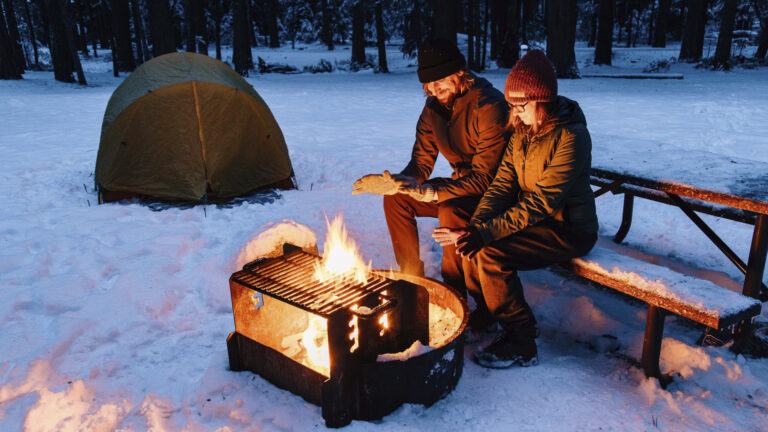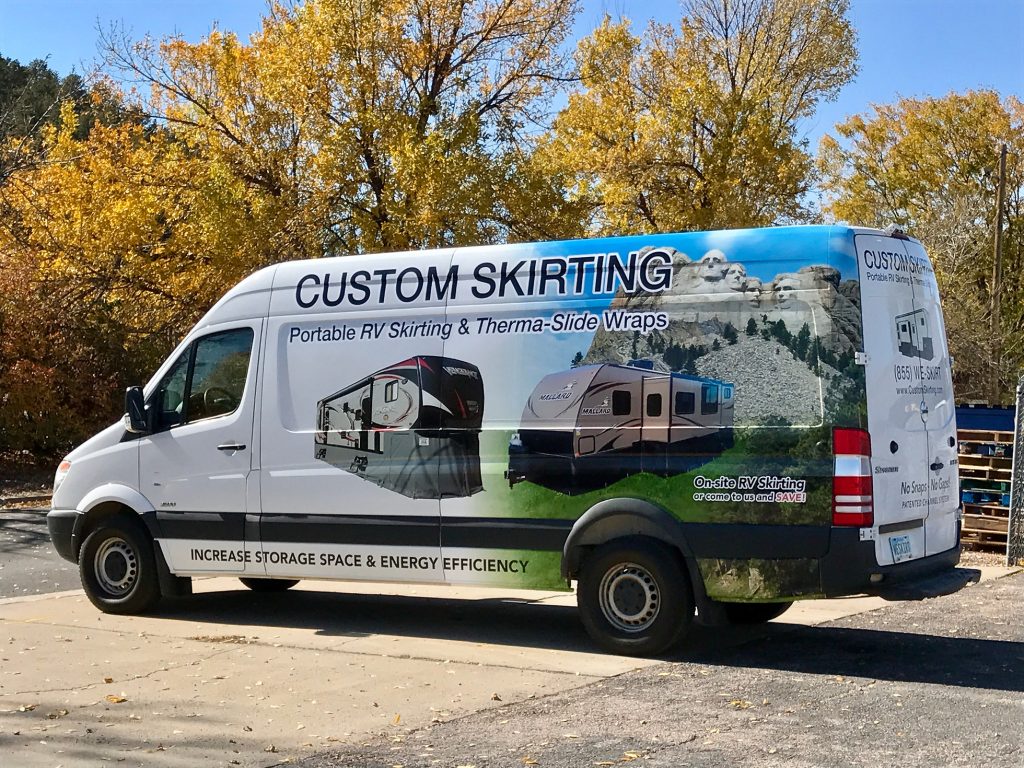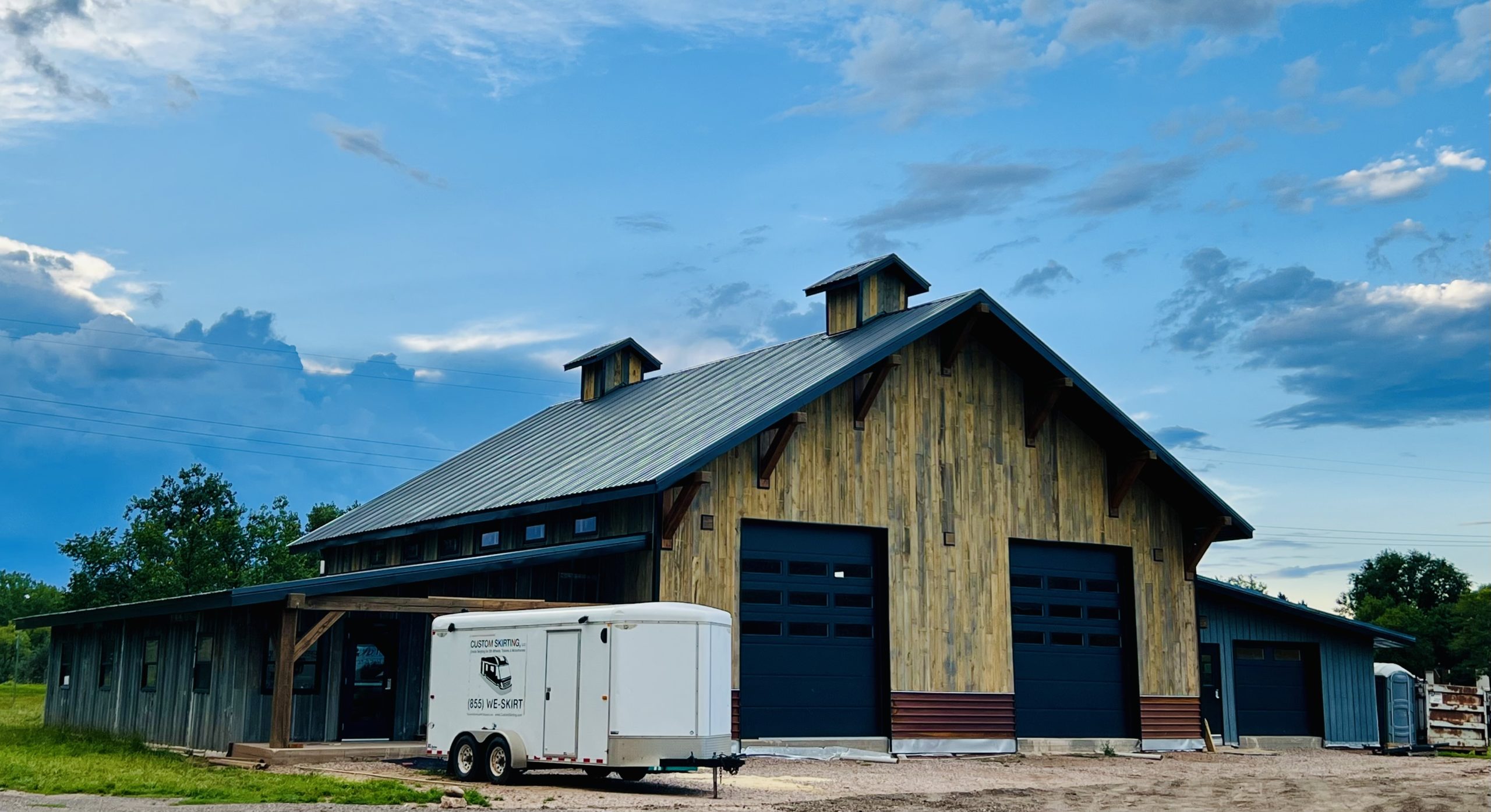Table of contents
Winter camping is a unique and rewarding way to experience nature. Imagine waking up to a pristine snow-covered landscape or catching the first light of dawn reflecting off a frozen lake. Winter camping offers unparalleled solitude, a fresh perspective on familiar trails, and opportunities for adventure that warmer seasons can’t match. However, concerns about staying warm and safe in cold conditions are common. This guide will provide you with essential winter camping tips, cold weather camping tips, and practical advice on how to stay warm while camping. By the end, you’ll be equipped to confidently embark on your own winter camping journey.
Understanding Winter Camping Basics
Types of Winter Camping
Winter camping can take various forms, each catering to different skill levels and preferences:
- Woodstove-fired hot tents: These are spacious tents equipped with a portable woodstove. They provide warmth and comfort, making them ideal for group camping or extended trips in harsh conditions. However, they require more setup and are heavier to transport.
- 4-season tents: Designed to withstand heavy snow and strong winds, these tents are perfect for backcountry winter camping. They’re lightweight and offer excellent weather resistance.
- 3-season tents (in milder conditions): Suitable for locations with minimal snowfall and milder temperatures. Adding a tarp for extra protection can make them usable in light winter conditions.
- Tarps and bivy sacks: These minimalist options are best for experienced campers seeking lightweight solutions. They’re not ideal for severe weather but can work in protected environments.
- Backpacking vs. car camping: Backpacking offers more remote experiences but requires careful planning to manage weight and gear. Car camping allows you to bring more equipment and stay closer to amenities, making it suitable for beginners.
Choosing the Right Location
Selecting the right location is crucial for a safe and enjoyable winter camping experience. Consider these factors:
- Accessibility in winter conditions: Ensure roads to the campsite are plowed and safe to travel.
- Proximity to emergency services: Choose a location within a reasonable distance of help in case of emergencies.
- Terrain and potential hazards: Be aware of avalanche-prone areas, thin ice on lakes, and steep inclines.
- Available amenities: Look for campgrounds with year-round facilities or backcountry areas popular with winter campers.
Great options include state parks with winter camping facilities or national forests that allow dispersed camping.
Essential Winter Camping Gear
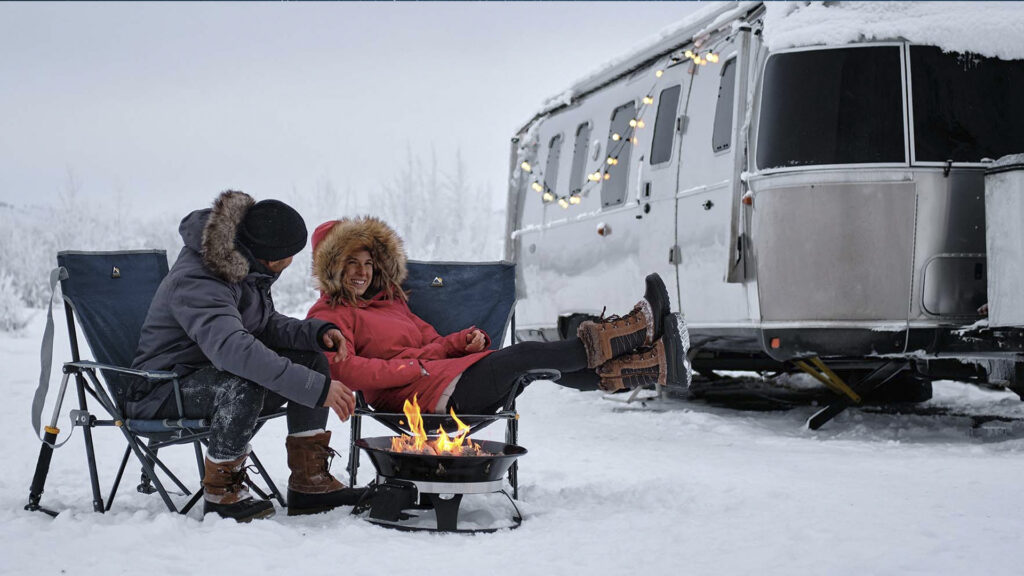
Shelter
A reliable shelter is your first line of defense against the elements:
- 4-season tents: These are designed to handle snow and wind, with features like strong poles, steep walls for shedding snow, and reinforced materials.
- Setup considerations: Pitch your tent on a level surface, compact the snow beneath for stability, and use specialized snow stakes or anchors.
Sleeping System
Your sleeping system must provide insulation and warmth:
- Sleeping bags: Opt for ones rated at 0°F or lower. Mummy-style bags with hoods offer better heat retention.
- Sleeping pads: Use pads with high R-values (4 or higher) to insulate against the cold ground.
- Additional insulation: Consider adding a sleeping bag liner or quilt for extra warmth.
Clothing and Layering
Proper clothing is essential for comfort and safety:
- Base layers: Choose merino wool or synthetic materials that wick moisture away.
- Insulating mid-layers: Fleece, down, or synthetic fill provide critical warmth.
- Outer shells: Invest in waterproof, breathable jackets and pants to protect against wind and moisture.
- Accessories: Don’t forget hats, gloves, neck gaiters, and insulated socks.
Stay dry and manage moisture to prevent hypothermia.
Cooking and Hydration
Cooking and hydration require special considerations in winter:
- Cold weather stoves: Liquid fuel stoves perform better in freezing temperatures compared to canister stoves.
- Melting snow for water: Always purify melted snow to ensure it’s safe to drink.
- Preventing freezing: Use insulated water bottles and store them inside your sleeping bag overnight.
- Meal ideas: High-calorie, easy-to-prepare meals like dehydrated soups and pasta provide energy for cold conditions.
Winter Camping Techniques and Tips
Setting Up Camp in Snow
Follow these steps for a secure and comfortable campsite:
- Campsite selection: Choose a flat, wind-protected area away from avalanche zones.
- Snow preparation: Compact the snow where you plan to pitch your tent to create a stable surface.
- Wind barriers: Build snow walls or use natural features to shield your tent from wind.
- Anchoring: Use snow stakes or bury regular stakes horizontally for a secure hold.
Staying Warm
Use these strategies to maintain warmth:
- Hot water bottle trick: Fill a sturdy bottle with hot water and place it in your sleeping bag.
- Pre-sleep exercise: Do light exercises to generate body heat before getting into your sleeping bag.
- Ventilation: Properly vent your tent to reduce condensation and prevent frost inside.
- Hand and foot warmers: Use disposable warmers to keep extremities comfortable.
Navigation and Safety
Winter conditions require extra caution:
- GPS devices: Keep them warm to preserve battery life.
- Weather patterns: Monitor forecasts and learn to recognize signs of changing weather.
- Avalanche awareness: Carry safety gear like beacons, probes, and shovels if venturing into avalanche-prone areas.
- Emergency communication: Satellite messengers or personal locator beacons are invaluable in remote areas.
Winter Camping Activities
Winter camping is a unique and rewarding way to experience nature. Imagine waking up to a pristine snow-covered landscape or catching the first light of dawn reflecting off a frozen lake. Winter camping offers unparalleled solitude, a fresh perspective on familiar trails, and opportunities for adventure that warmer seasons can’t match. However, concerns about staying warm and safe in cold conditions are common. This guide will provide you with essential winter camping tips, cold weather camping tips, and practical advice on how to stay warm while camping.
Understanding Winter Camping Basics
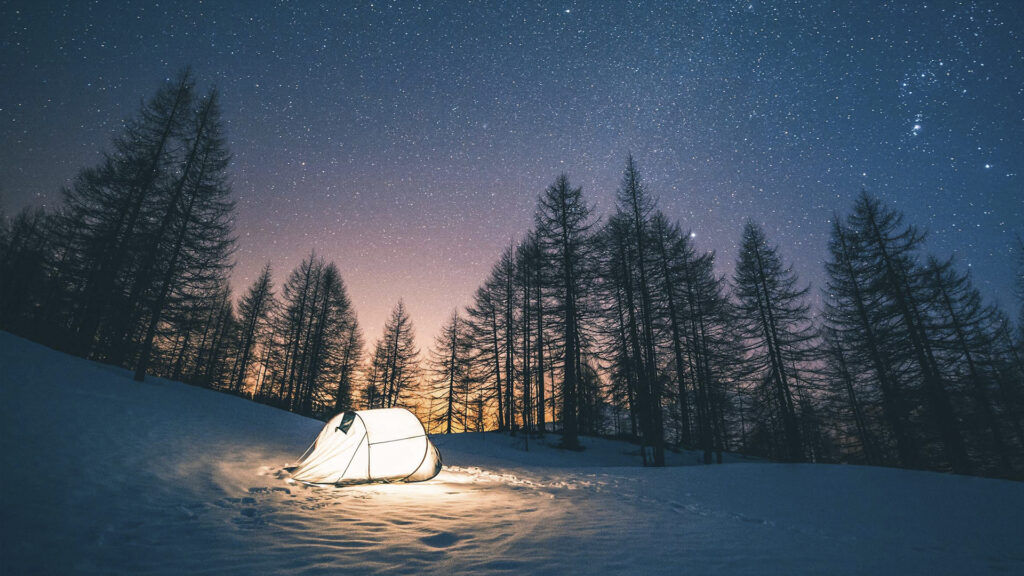
Types of Winter Camping
Winter camping can take various forms, each catering to different skill levels and preferences:
- Woodstove-fired hot tents: These are spacious tents equipped with a portable woodstove. They provide warmth and comfort, making them ideal for group camping or extended trips in harsh conditions. However, they require more setup and are heavier to transport.
- 4-season tents: Designed to withstand heavy snow and strong winds, these tents are perfect for backcountry winter camping. They’re lightweight and offer excellent weather resistance.
- 3-season tents (in milder conditions): Suitable for locations with minimal snowfall and milder temperatures. Adding a tarp for extra protection can make them usable in light winter conditions.
- Tarps and bivy sacks: These minimalist options are best for experienced campers seeking lightweight solutions. They’re not ideal for severe weather but can work in protected environments.
- Backpacking vs. car camping: Backpacking offers more remote experiences but requires careful planning to manage weight and gear. Car camping allows you to bring more equipment and stay closer to amenities, making it suitable for beginners.
Choosing the Right Location
Selecting the right location is crucial for a safe and enjoyable winter camping experience. Consider these factors:
- Accessibility in winter conditions: Ensure roads to the campsite are plowed and safe to travel.
- Proximity to emergency services: Choose a location within a reasonable distance of help in case of emergencies.
- Terrain and potential hazards: Be aware of avalanche-prone areas, thin ice on lakes, and steep inclines.
- Available amenities: Look for campgrounds with year-round facilities or backcountry areas popular with winter campers.
Winter Camping Techniques and Tips
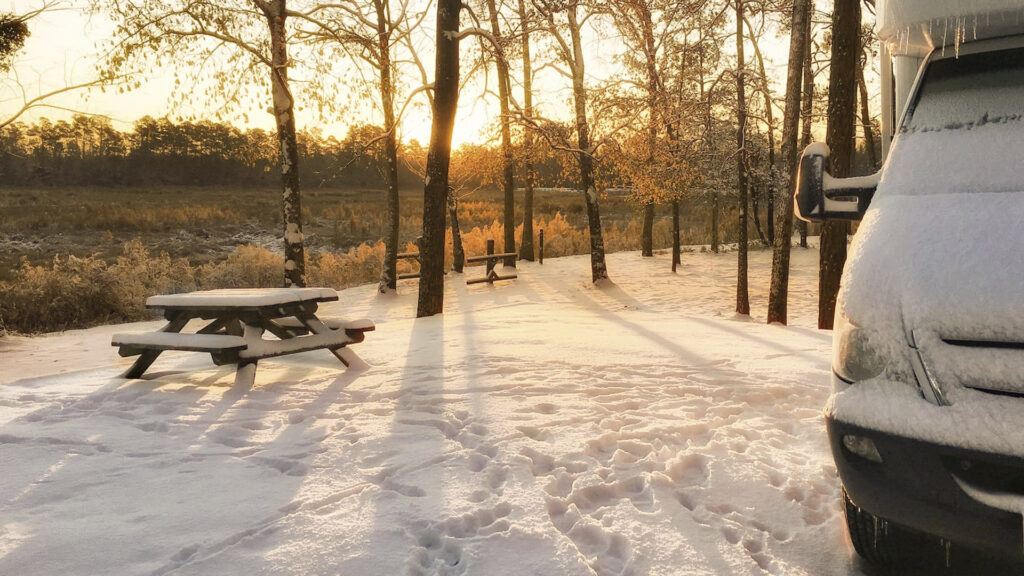
Setting Up Camp in Snow
Follow these cold weather/winter camping tips for a secure and comfortable campsite:
- Campsite selection: Choose a flat, wind-protected area away from avalanche zones.
- Snow preparation: Compact the snow where you plan to pitch your tent to create a stable surface.
- Wind barriers: Build snow walls or use natural features to shield your tent from wind.
- Anchoring: Use snow stakes or bury regular stakes horizontally for a secure hold.
Staying Warm
Use these strategies on how to stay warm while camping:
- Hot water bottle trick: Fill a sturdy bottle with hot water and place it in your sleeping bag.
- Pre-sleep exercise: Do light exercises to generate body heat before getting into your sleeping bag.
- Ventilation: Properly vent your tent to reduce condensation and prevent frost inside.
- Hand and foot warmers: Use disposable warmers to keep extremities comfortable.
Navigation and Safety
Winter conditions require extra caution:
- GPS devices: Keep them warm to preserve battery life.
- Weather patterns: Monitor forecasts and learn to recognize signs of changing weather.
- Avalanche awareness: Carry safety gear like beacons, probes, and shovels if venturing into avalanche-prone areas.
- Emergency communication: Satellite messengers or personal locator beacons are invaluable in remote areas.
Winter Camping Activities
Make the most of your winter camping adventure with these activities:
- Snowshoeing or cross-country skiing: Explore snowy trails while getting a great workout.
- Winter photography: Capture stunning landscapes and unique light conditions.
- Stargazing: Clear winter skies are perfect for spotting constellations and shooting stars.
- Wildlife tracking: Look for animal tracks in the snow and observe wildlife in its winter habitat.
Your Winter Adventure Awaits at Black Hawk Creek RV Park & Cabins
Embrace the magic of winter camping with a cozy retreat at Black Hawk Creek RV Park & Cabins! Nestled near South Dakota’s iconic attractions like Mount Rushmore and Badlands National Park, our park is the perfect home base for exploring stunning snow-covered landscapes and enjoying seasonal activities. Relax in our comfortable cabins or RV-friendly amenities after a day of adventure. Don’t miss out on a memorable winter camping experience—book your stay today and discover the beauty of South Dakota in winter!
